
Wishful thinking, one summer in years gone by. Warm weather, monster tomato plants on our homemade tomato cages.

Our gallon pots that we are selling now
First, let me apologize, I fully expected to be able to continue this thread and then life got crazy! We started selling our plants much earlier than we had planned to. The Garden Expo we were camping up for was canceled due to the virus situation, and that is a third of our sales. I wish this was my “hobby” but it’s around 50% of our income so we had to scramble to figure out how we were going to overcome this serious setback. Instead of 1500 gallons, we had 3000! Thankfully, we are considered an essential business and we knew that the “new normal” would make selling a lot more difficult so we started to sell early. Everyone had been very generous and understanding. I lowered the price of my gallons by $2, they are now $8.00 and have changed the way we are getting plants to the customer. Curbside delivery, home delivery with minimum orders, appointments, social distancing, monitoring how many in a greenhouse at a time (1) husband and wife are considered as one person, if they haven’t caught it from each other at home they won’t be catching it in the greenhouse! Fun times! Apologies aside here is the long-awaited post.
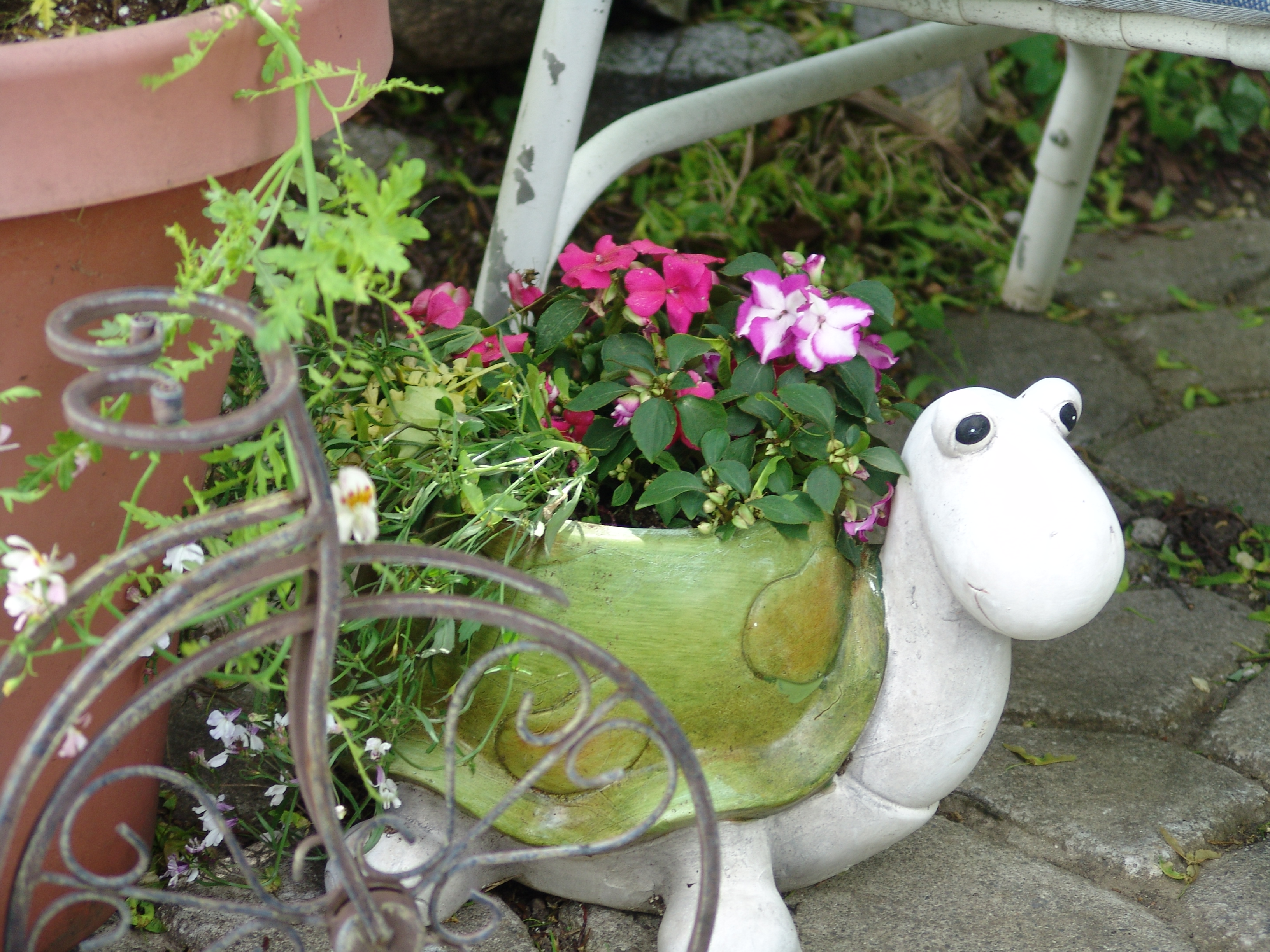
Cute little guy with impatiens. For a shade garden, small soil cavity so better for a shade garden where it won’t dry out as fast.
So far we have discussed basic tips on raised bed gardening, in-ground gardening and edible landscaping which simply means including vegetable plants in your decorative gardens. I am a big believer in container gardening, for vegetables, for flowers, and for both mixed together. Edible container gardens don’t need to be boring or plain or merely functional. In container gardens, there is a design principle that most of us learn, thrillers, fillers, and spoilers.

For a shade garden – wax begonias, impatiens and alyssum in a “flower bed”
Thrillers are your focus plant. It is the dracaena spike, coleus, begonia, ornamental grasses anything that is a big, eye-catching focal point. In an edible container garden, it would be your tomato plant, cucumber vine, lettuce etc. Can you imagine growing carrots, with their ferny, frothy foliage in the middle of a large container surrounded by flowers? Sweet.

Krainy Sever, a dwarf tomato with petunias and lobelia
Fillers are mid-size, mounding or rounded plants that surround your focal plant. You can use it to complement or contrast the colors of the focal plant. If it is a dappled shade garden, wax begonias, gazania, ageratum, impatiens would be good choices. Petunias, mounding lobelia, alyssum, ivy geraniums, nasturtiums, and million bells, are all good choices for plants in containers in the sun.

Pansies and alyssum as a fluffy white skirt in a coffee pot
Spillers are plants that tumble over the sides of the container, softening the edges and providing more color. Bacopa, petunias, alyssum, trailing lobelia, sweet potato vine, ivy, are good choices.

Salad Bowls – various lettuces in colanders with alyssum and lobelia
Light, Temperature, Nutrition
Some plants can work in partial, dappled shade, million bells, lobelia, alyssum, bacopa, petunias, and geraniums. Very versatile. This leads me to my next point: keeping in mind the various light, temperature and nutritional needs of the plants.
I would never put coleus and petunias in the same pot. Coleus, for the most part, like shade (although there are new sun-tolerant varieties coming out today), Petunias do better with more sun. Vegetables also do better with more sun. Lettuce would be a good filler or focus plant for partial sun. Tomatoes need a lot of sunshine to be prolific. anything that produces fruit, such as tomatoes or cucumbers, need a lot of energy to form it.
Think of putting drought-tolerant plants together, shade-loving plants, or sun-loving plants in the same pots. Temperature is another factor although I think of it more in terms of succession planting. Pansies and Schizanthus like cooler temperatures and lots of sun. One of my favorite combinations to plant is a tomato or lettuce plant (which also likes cooler temperatures), petunias, lobelia and alyssum. When the cool weather plants succumb to the heat, or I eat the lettuce, the petunias alyssum and lobelia take over. I can also insert other plants in their place. Two-season beauty!

Lettuce, alyssum, and a tomato in a pot, probably a Tumbler
When choosing your vegetables for your pots, choose varieties that are developed for containers. Determinate or dwarf tomato plants, compact pepper plants, carrots that are short in length, cucumbers that don’t vine too much, squash with a more compact shape, bush beans, (if you had a large pot, you could do a pole bean and trellis it), spinach, beets. and even melons. Look for words like “compact”, “determinate”, “short vines”, “small” and “dwarf”.
The picture above shows “Small Wonder” spaghetti squash, “Spacemaster” cucumber plant and fingerling potatoes in pots. Below are carrots that I grew as an experiment in pots. They were amazing!

Carrots in a square pot
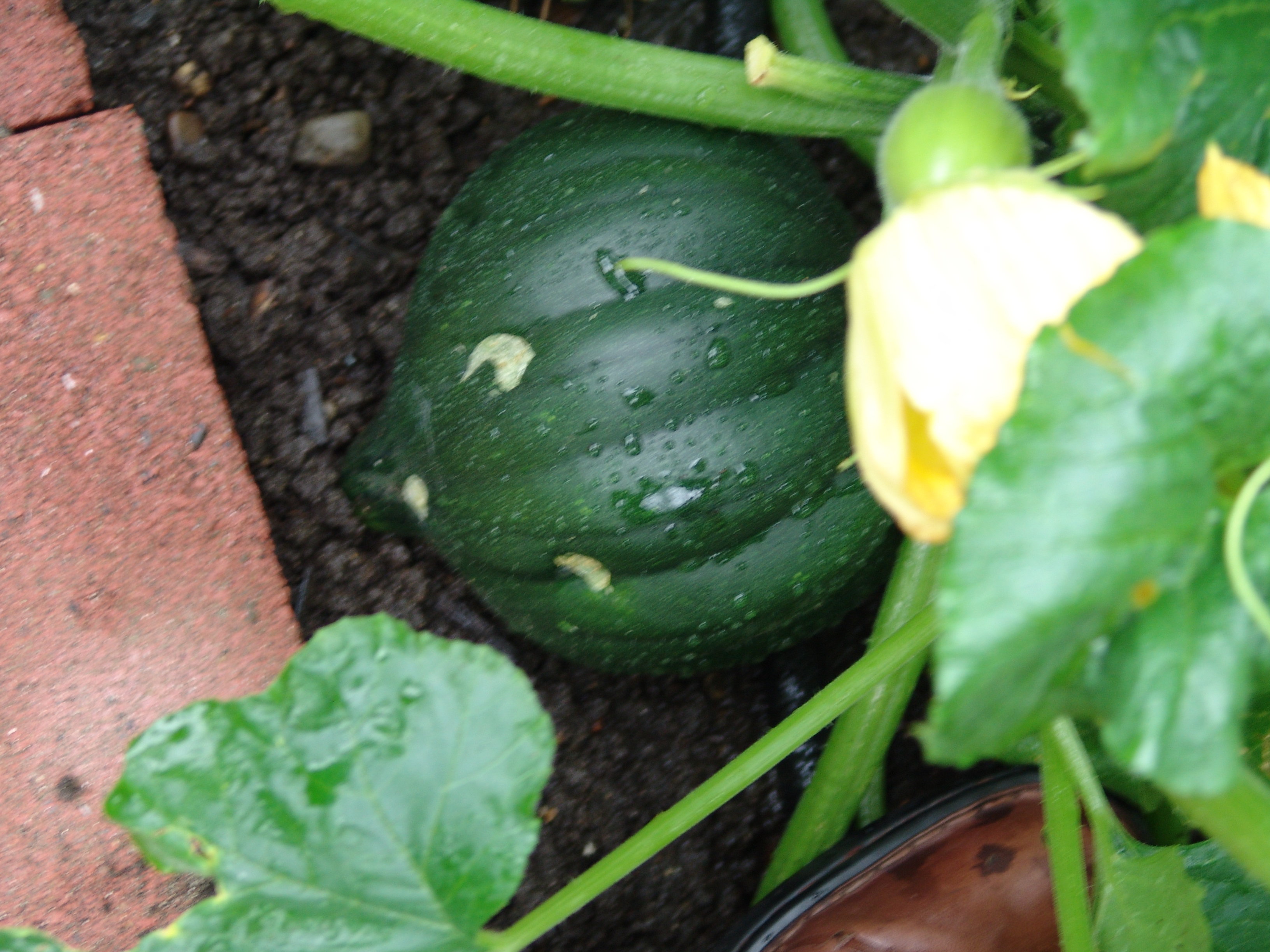
Sweet Reba acorn squash
“Sweet Reba” (above) is a good candidate for a large container since it is a compact plant.
Here are some good choices for vegetables:

Coffee anyone?

Tomatoes and flowers in a large pot
Let’s not forget herbs. Most herbs like to live in pots. Purple Basils add a nice punch to a container. Thyme would be a good spiller.
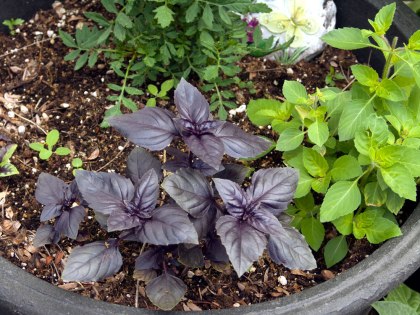
Rosie basil

Cardinal basil

container herb garden
In the end, we are gardeners. We try everything, if it works great, if not we try again!
Here are a few pots that I have done over the years.

a mix of petunias, alyssum

shade planting coleus and ivy geranium

tomatoes spilling over a pot with flowers

tomato with petunias

nasturtiums and lettuce

feher ozon paprika pepper in pot

candyland in pot

lettuce

Rosie basil with other plants

patio tomato

a mix of petunias, alyssum

shade planting coleus and ivy geranium
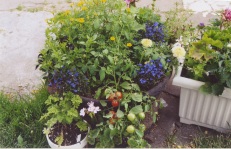
tomatoes spilling over a pot with flowers

nasturtiums and lettuce

tomato with petunias

feher ozon paprika pepper in pot
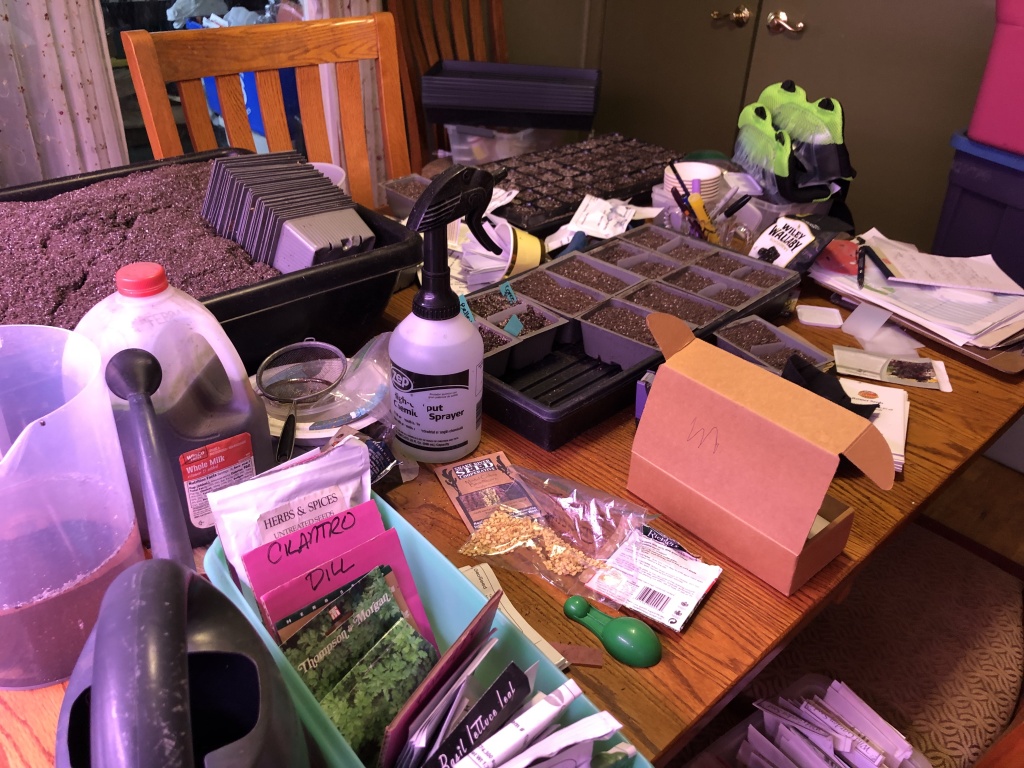
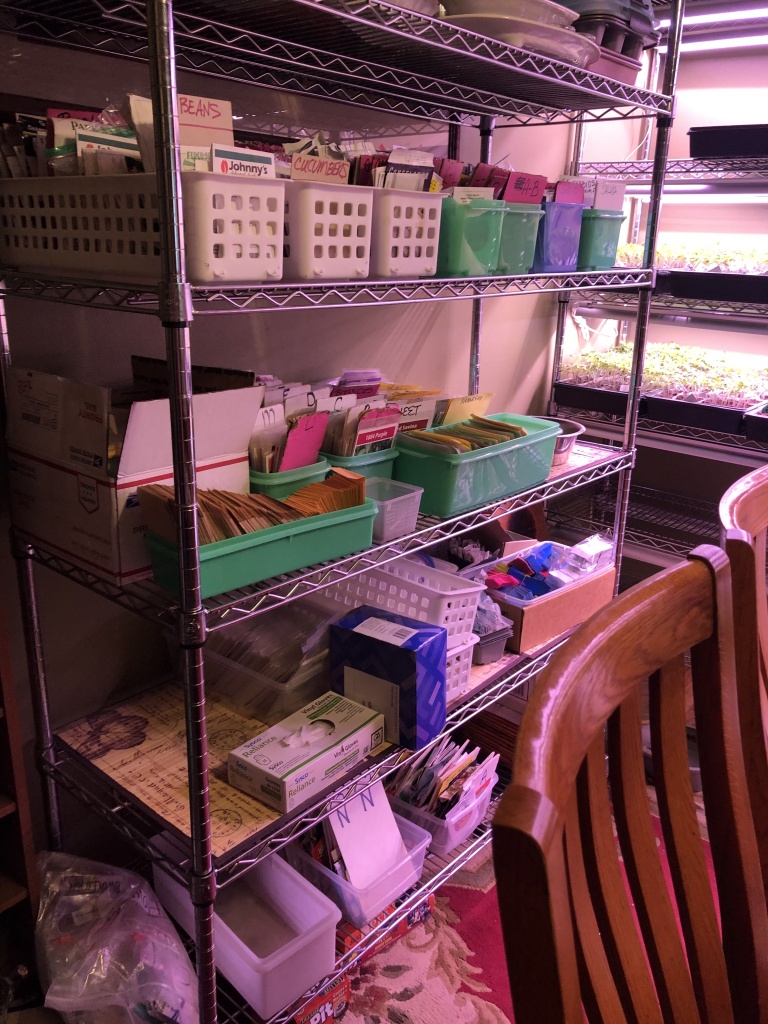
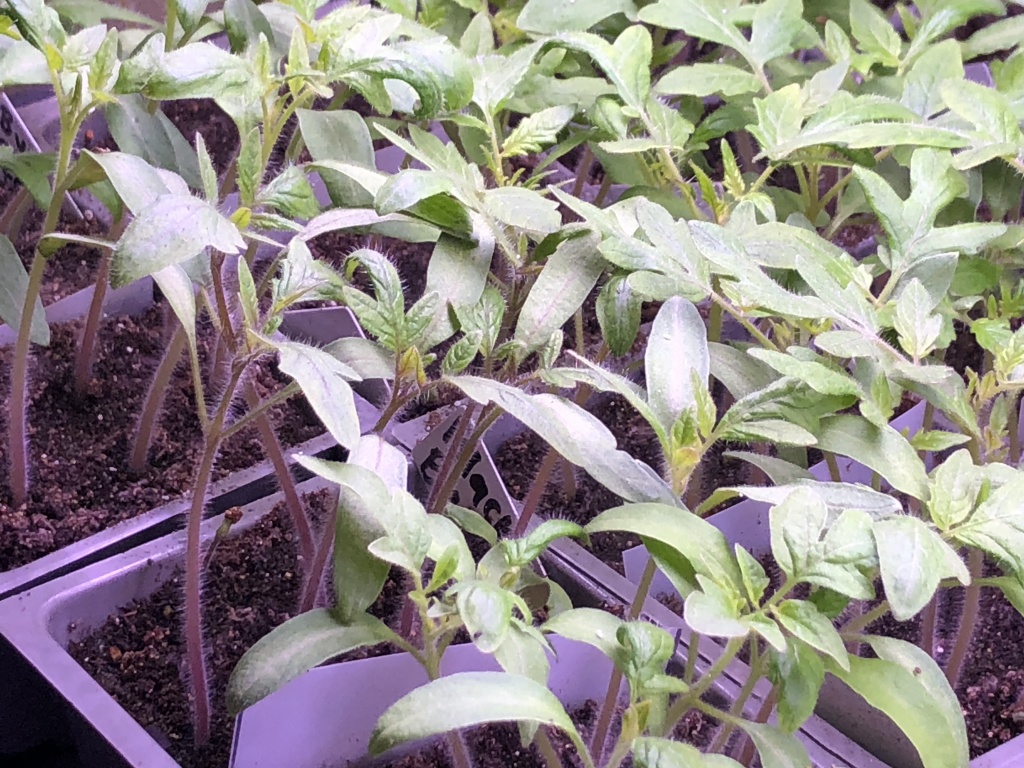

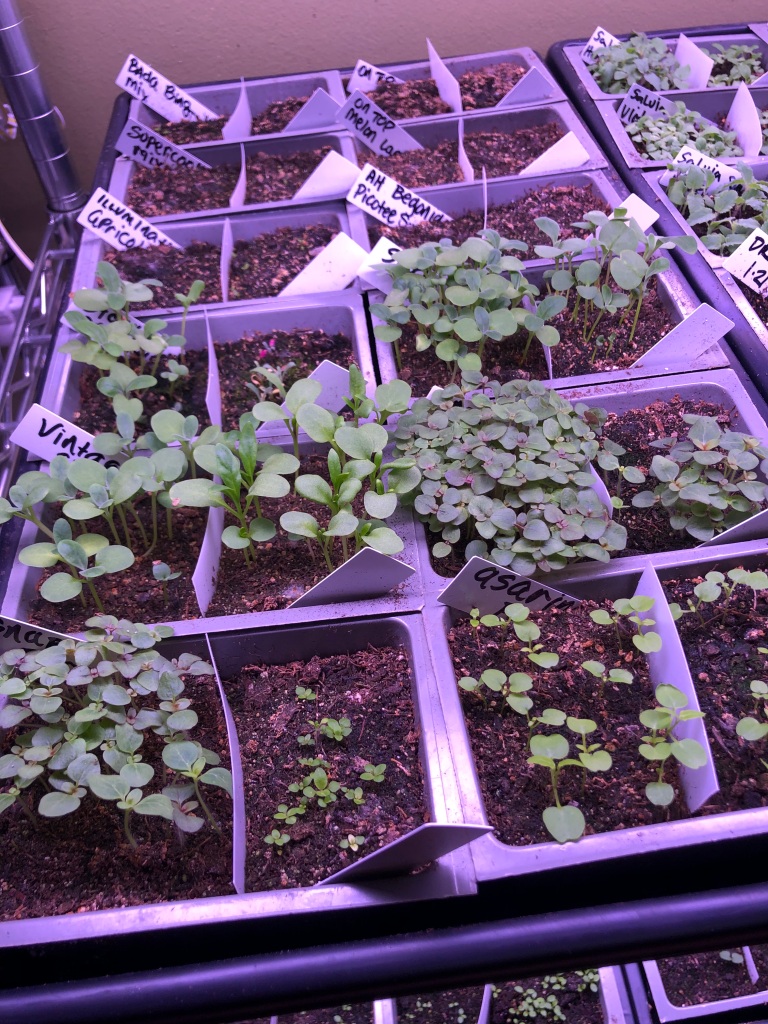
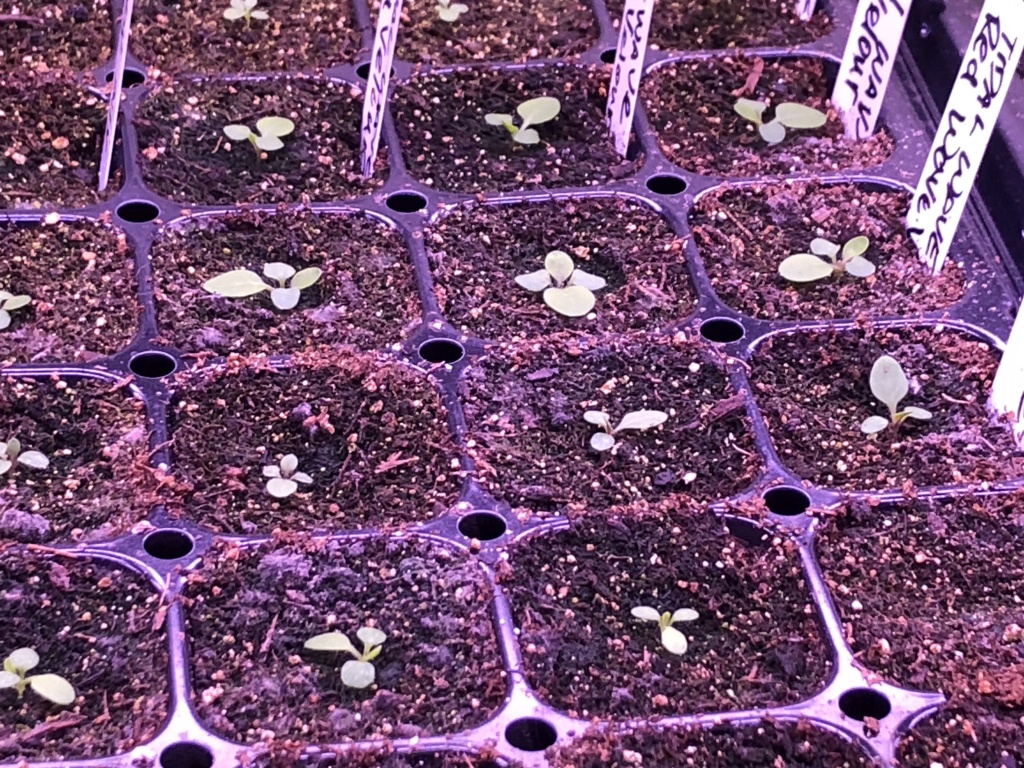
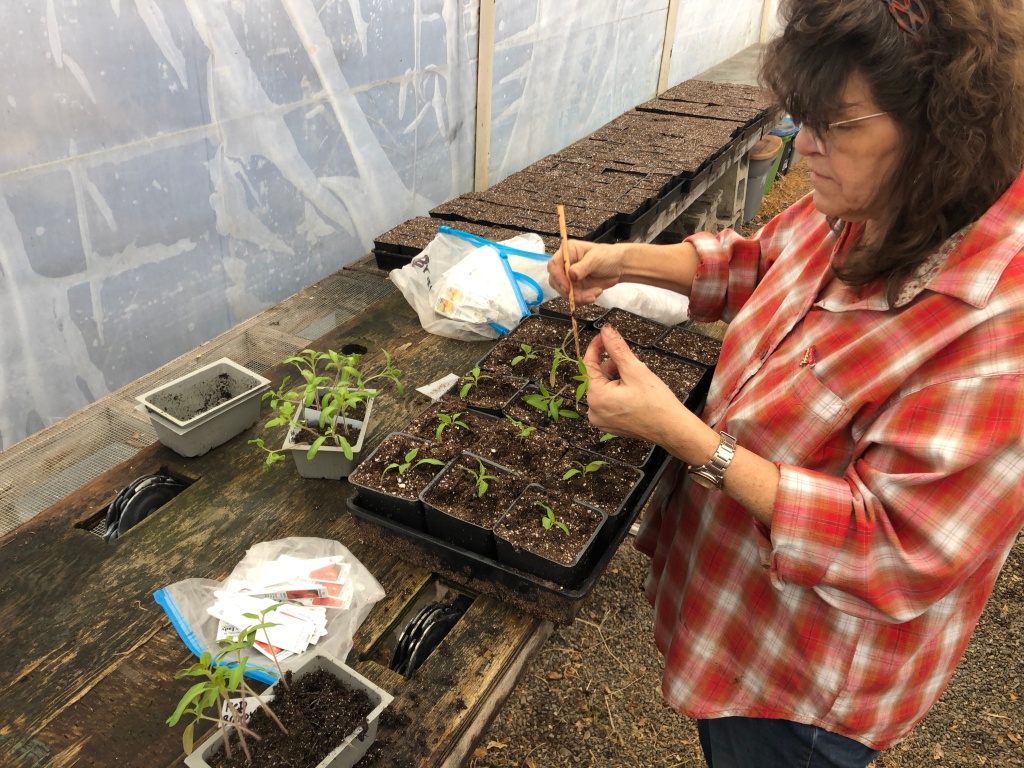
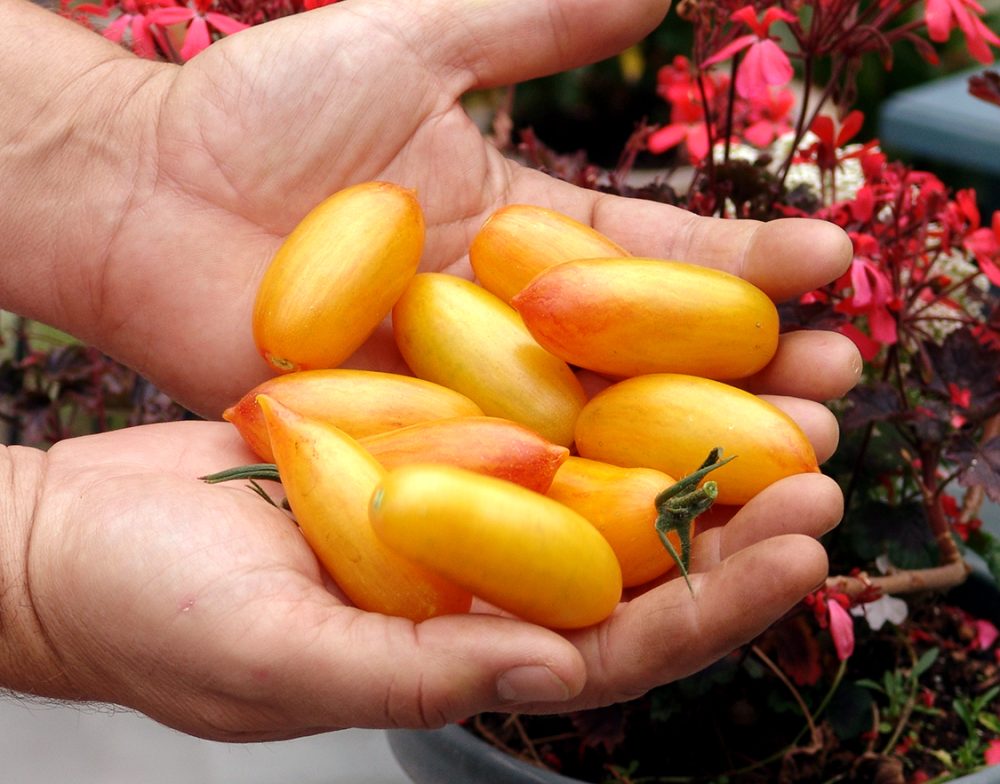

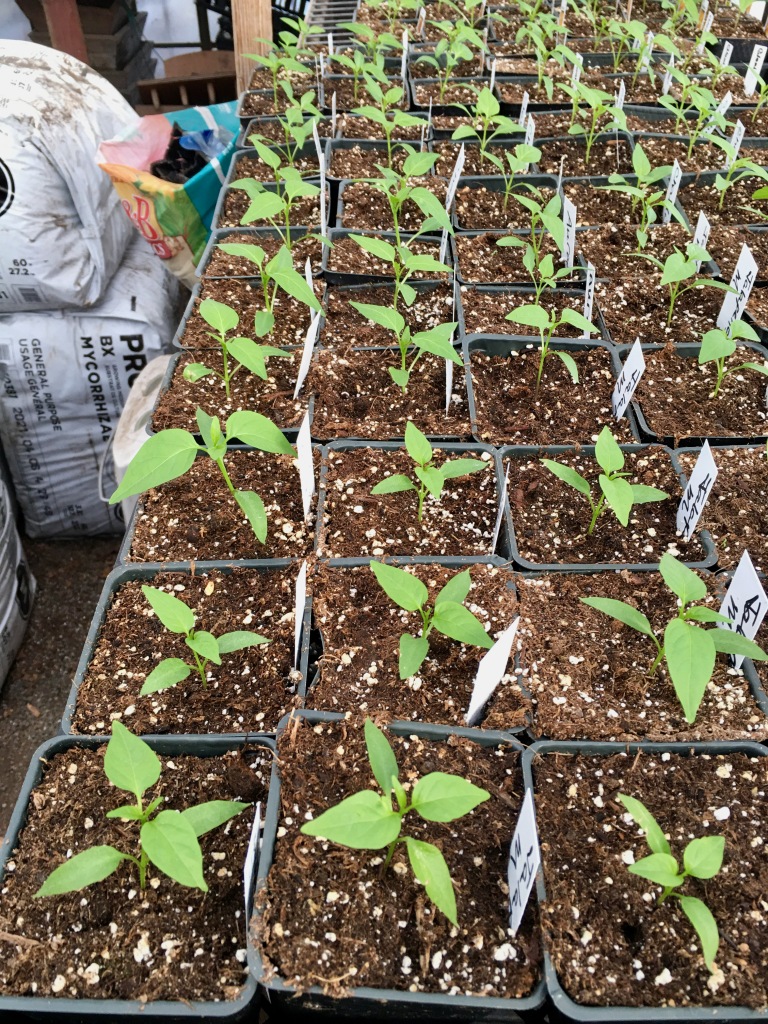


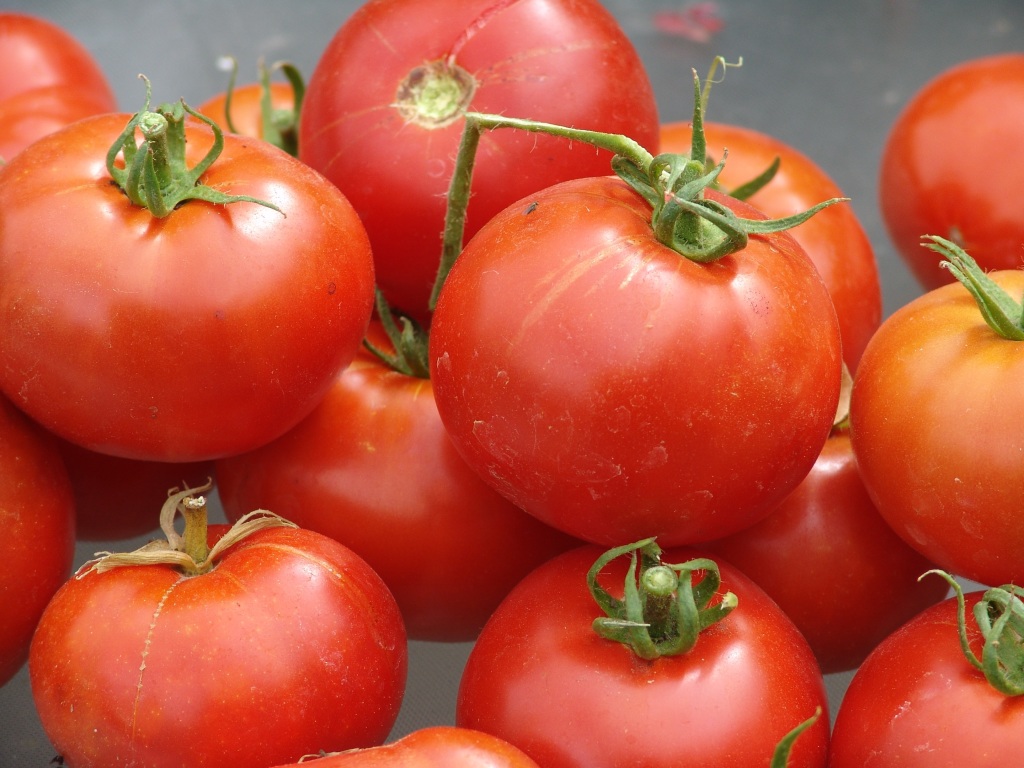









































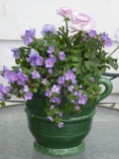


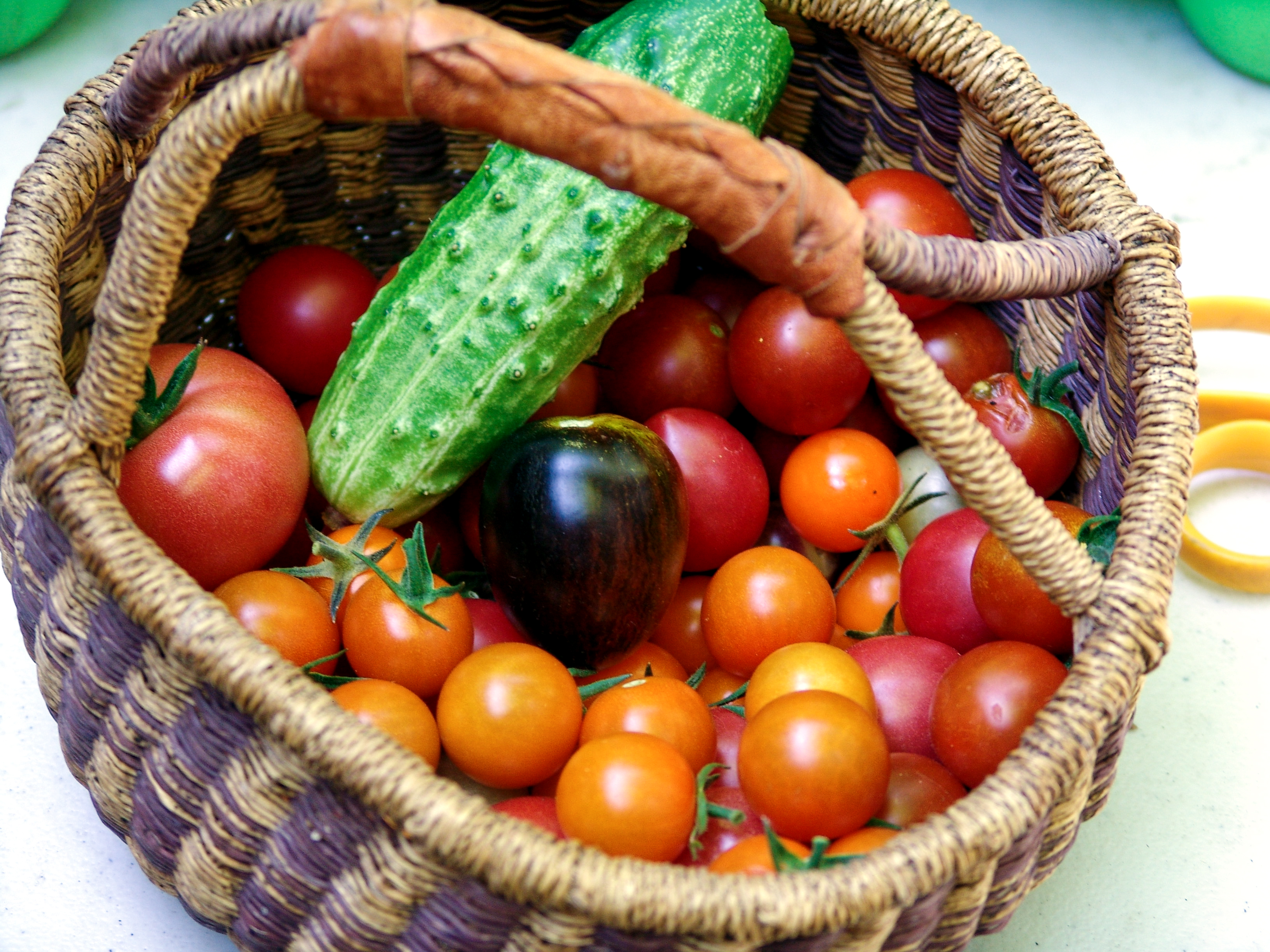














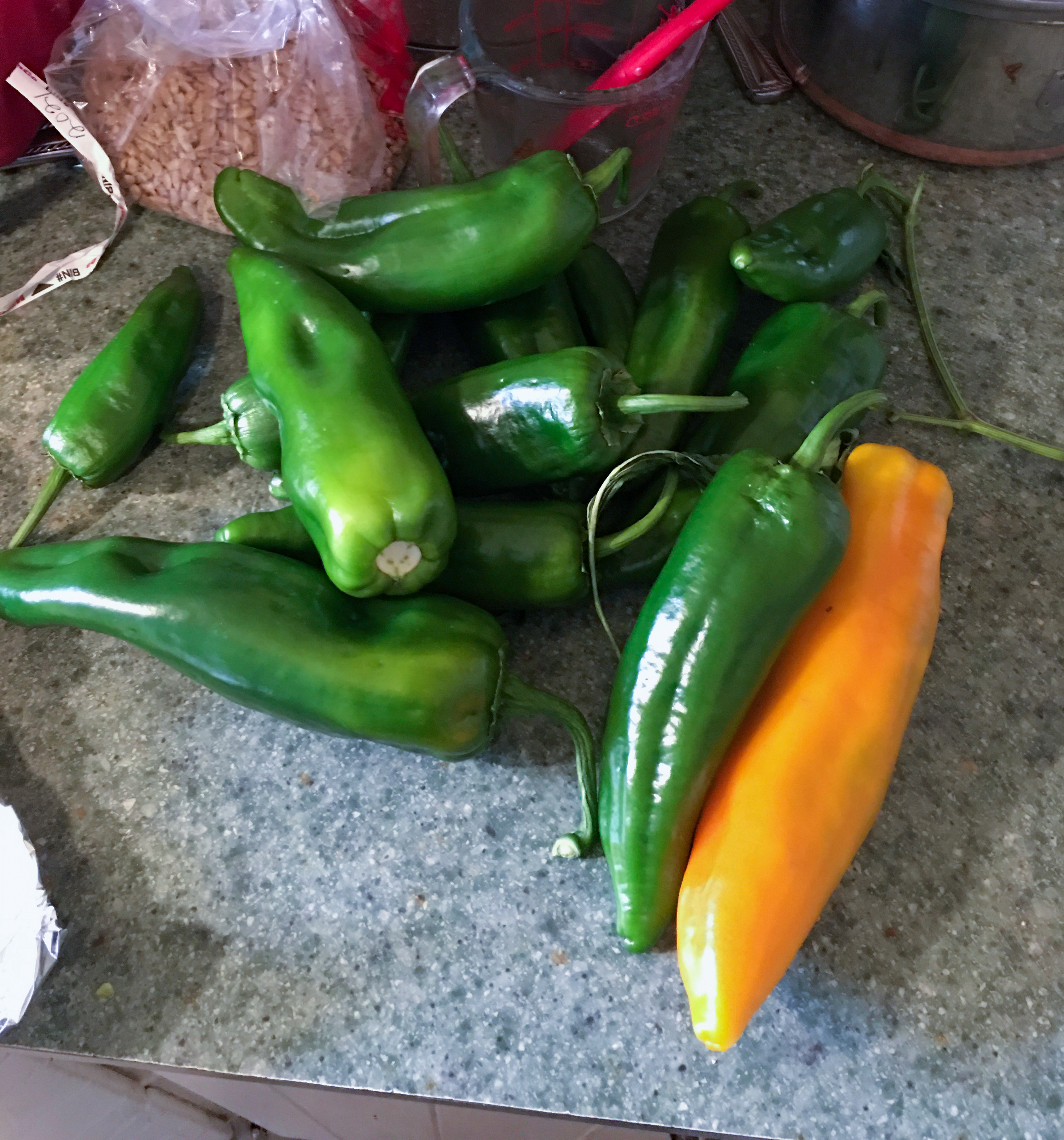
 We have been picking broccoli for quite a while now, today, I picked our cauliflower. One was a gorgeous purple and the other a beautiful cheddar yellow. First time I’ve ever grown cauliflower and got something besides a softball size, insect-eaten, inedible object, sprouting flowers. My first introduction to colored cauliflower came from Winco. One day, they were sitting in the produce aisle. As you know I love color. They taste exactly like the white ones but are prettier. Great for a veggie tray although I see cheese sauce in it’s future.
We have been picking broccoli for quite a while now, today, I picked our cauliflower. One was a gorgeous purple and the other a beautiful cheddar yellow. First time I’ve ever grown cauliflower and got something besides a softball size, insect-eaten, inedible object, sprouting flowers. My first introduction to colored cauliflower came from Winco. One day, they were sitting in the produce aisle. As you know I love color. They taste exactly like the white ones but are prettier. Great for a veggie tray although I see cheese sauce in it’s future.
